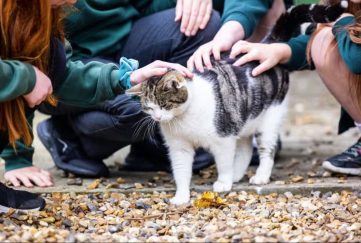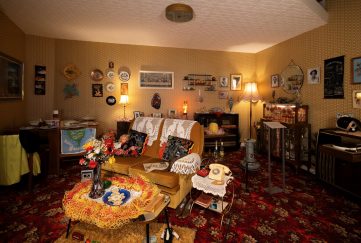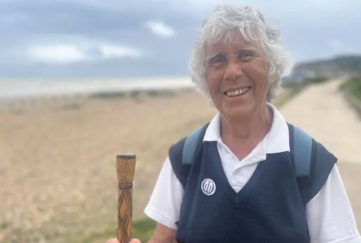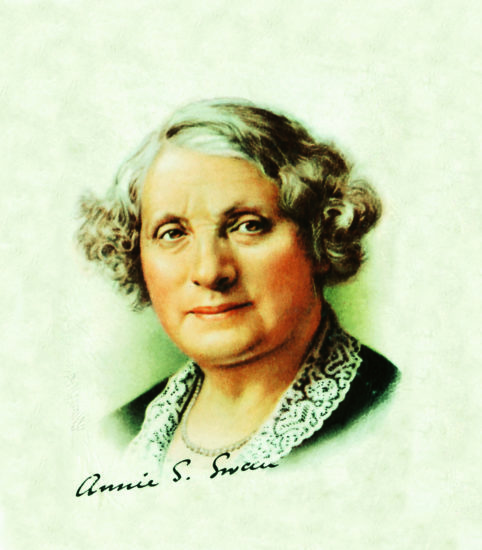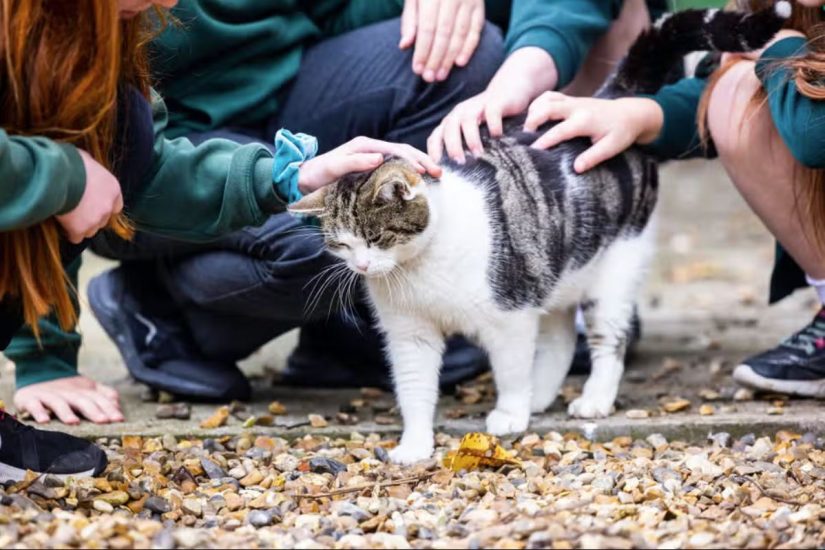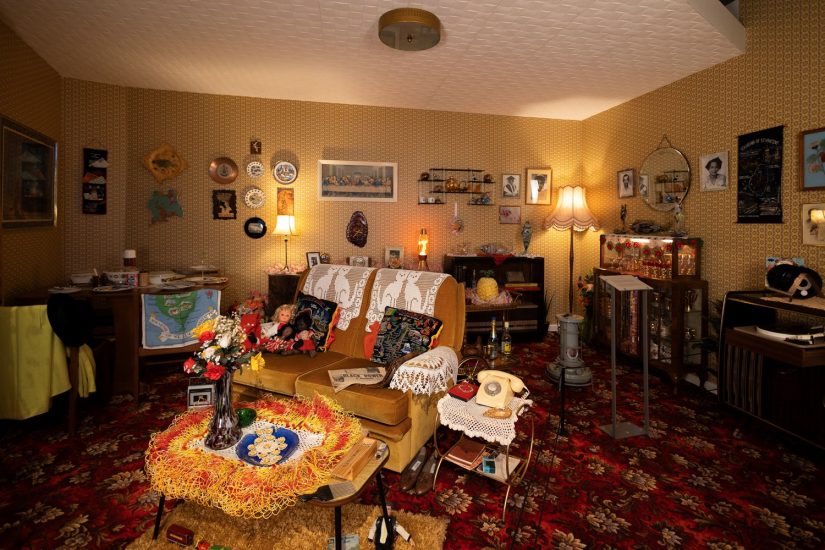Among Simple Folk: A Romantic Chapter In The Life Of Annie S Swan
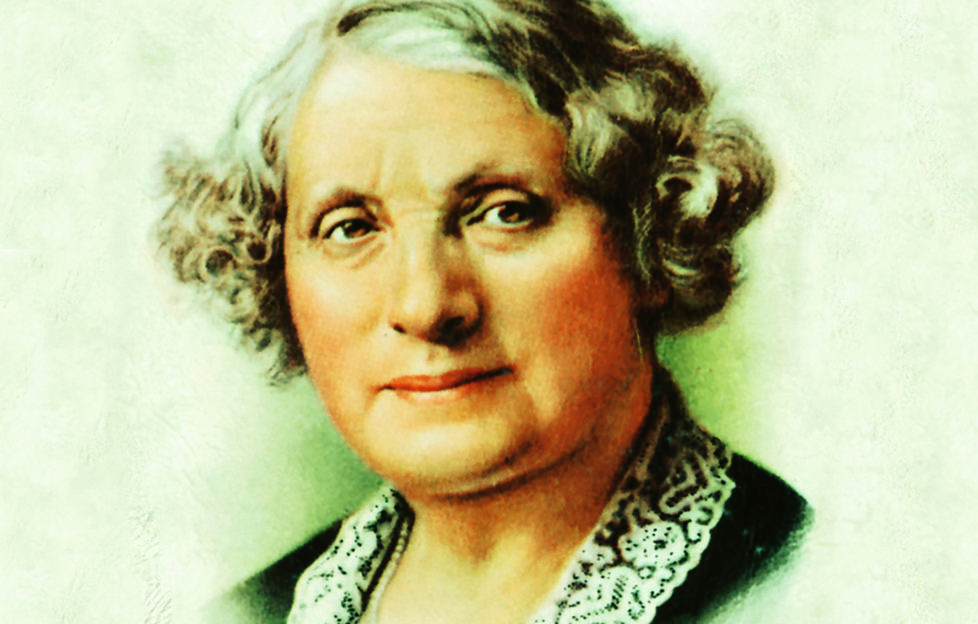
We’re breaking the rules a little with this one . . .
It’s not technically a story, but it is a wonderfully written feature on famous “Friend” author Annie S Swan, by Russell Paton.
It was the language used that captured our attention. This was first published in 1905, when Annie was very much at the height of her powers.
What must she have thought to have such glowing praise lavished on her in “The People’s Friend”?
A laverock was warbling high up amid a patch of blue sky showing through a rift in the fleecy clouds, as I rested for a little on the northern slope of the Cunin brae.
Here one catches a first glimpse of the quaint Fifeshire moorland village, having an even quainter name — Star Of Kennoway.
A mere hamlet of red-tiled houses, scattered here and there on the verge of a stretch of peat moss — this is the place which figures as “The Beild” in this gifted author’s writings.
The dwellings are those of a primitive people, the red-roofed school being the largest, and the blue-slated schoolhouse adjoining, with creeper-covered walls and overhanging eaves, possibly the neatest dwelling in the clachan.
This is the shrine of our pilgrimage, for within this cottage there once dwelt a country schoolmaster’s wife, who was a gifted storyteller, and to this secluded retreat came the late Mr Stewart, then editor of “The People’s Friend”.
His mission was to assure the talented young writer that she had indeed been chosen to fill a peculiar place in the hearts and lives of the people, and ever since that compact was made on behalf of the readers of the “Friend” have they been delighted and charmed by the brilliant series of stories from her pen, which have time and again been accorded the place of honour in its pages.
In view of the commencement of Annie S Swan’s new serial story, “A Mask Of Gold”, it may prove interesting to readers to learn something of the incidents surrounding the life of the writer in those earlier years ere fame had called her from the peaceful environment of a secluded country life.
The early homes and haunts
The early homes and haunts of literary mortals seem to possess a special interest and fascination. All true-born Scotsmen sooner or later endeavour to find their way to that humble cottage by the banks of Doon, to stand in reverential mood under the same roof which, according to tradition, once sheltered Scotland’s greatest poet; while, across the Border, pilgrims from afar visit the shrine of the Bard Of Avon.
In a much humbler way, yet breathing something of the same spirit, do lovers of JM Barrie’s writings visit “Thrums” to gaze at Henry’s cot standing sentinel on the brae.
At best the idea is fanciful, for has not Barrie himself plainly assured us that never did he so much as set foot within that humble dwelling, and Jess’s window we sorrowfully discover to be a delusion, and to have no real existence.
In the same manner the literary pilgrim who, like the travelling basket woman, wanders up from Crieff to Amulree inquiring for Dalmore, the abode of the heroine of our author’s favourite novel, “Sheila”, will be sadly disappointed for this dwelling and its fair occupant Sheila McDonald but form part of the mysteries and little necessary fictions of literary craft.
In approaching the cottage schoolhouse of Star, however, no such disappointment awaits us, for assuredly this dwelling was for a period the actual home and abode of one whose name is now known throughout the land as a talented writer of novels.
One of the first lessons which her mother had sought to impress upon her daughters was that whatever lot in life they should subsequently be called upon to fill, it would be filled none the less ably for their being thoroughly trained in domestic management.
In the kitchen of the cottage, therefore, one can imagine the young wife busy with her household duties.
Busy with her household duties
But perhaps with a watchful eye on the roadway for the “postie” bringing the expected proof-sheets of her latest dreamchild of fiction, which was destined to exert a wondrous power and influence for good, bringing comfort and sunshine to many perplexed though simple lives.
From that little back window how often she must have viewed the prospect at the sunset hour — the expanse of peat moss with a wealth of yellow broom and whins in the foreground and stretching nigh to the green and wooded slopes of the East Lomond hill with the bosom-shaped summit of the West Law appearing in a dim blue haze behind it. This is the same scene which she so vividly describes in “Hamespun”:
“The moss was a wide stretch quite three miles across, and was then hemmed in by the first soft swelling ridges of the Corbie (Lomond) hills. The wideness and lonely stillness on the moss gave it a strange beauty of its own, and in clear, amber evenings the peat stacks stand out against the sky, their even outlines transfigured into many graceful shapes.
“There are green spots here and there on the dull brown expanse, and little grassy paths edged with bluebell and yellow primrose; and then when the autumn comes there are patches of glowing purple where the heather grows.
“You never saw finer sunsets that I have seen on the Beild moss, and I have often thought that if the colours were reproduced on canvas they would at once be pronounced unnatural and exaggerated. Sometimes the crimson has a touch of flame and the gold so fiercely burnished, and the ragged edges of the clouds resting on the Lomonds rests so vividly outlined that it has a look of weirdness denied to softer colourings and outlines.
“And then the beauty of the soft summer mornings on the treeless moss — the exquisite blendings of light and shade on its variegated breast, blendings created nobody knows how — and the great stillness, save for the continuous twittering of birds, and the wide, wide freshness of the scene!
“Oh, Beild folks have a treasure in their moss, and some of them even dwelling in their humble cottages appreciate its beauty in every aspect.
“In wintry weather it is a wild, desolate, uncanny place, with the seabirds screaming and the curlews calling across the space, and the snow patches making the dark, rich brown of the bogs seem almost black; the wonder to me has long been that no artists has sought to give its beauty to the world.”
Visitors of fame
One wonders what were the dreams and ambitions of the gifted author at this stage of her career! Did she feel the ever-increasing power throbbing within her to create such things of life and truth as would appeal to the hearts and gladden the lives of the general sisterhood of womankind?
Did she catch a glimpse of those visions of fame and fortune and regal honours which were awaiting her? The answer to these questionings comes in conversing with those who came in contact with Annie S Swan during those years.
They ever had the feeling that, even when she was among them, she was not of them, but would one day transcend these surroundings. Yet, with what wonderful power and energy di she devote herself to the daily round, the common task of life.
Faithful in the least of these things, she has attained to the honoured dignity of being a ruler over many things which pertain to woman’s domain.
Mrs Burnett Smith (to her her wedded name for once) returns almost annually to visit the good folks of the Beild, some of whom she regards as life-long friends.
Ask any of the women folks about the Star which of Annie Swan’s stories they consider to be her best, and immediately the answer comes “Hamespun”; and little wonder, for, apart from its excellent merits, it is above all at ale of their own homeland.
The saying that a prophet is without honour in his own country does not hold good as referring to the subject of our sketch, for among Star folks she finds her warmest admirers, although at the same time, as she would perhaps be the first to confess, her greatest critics.
A new story by their favourite author
To them especially, a new story by their favourite author is quite an event in their quiet lives.
With what pride are gifted volumes displayed when the story comes to be published in book form. At such times one sees the same love-light in the eye as brightened the face of Robert Louis Stevenson’s old nurse, Ailie, when she showed the books sent by “her laddie”.
The autograph hunters, to whom nothing seems sacred, sadly pester such privileged mortals as receive letters from “Aldersyde, London”, with that characteristic flowing signature; but, well, we will leave it to the imagination of the reader as to how they fare in their quest, for they are a most peculiar people these dwellers in Star land.
Wonderful observers are they one and all, whose powers of deduction and inference are simply marvellous. Has a stranger been seen to stand on the moss-side and view the setting sun glinting over the Lomonds — then he must be an artist.
Was he seen to stand at the Post Office, and jot something in a note-book — at once they have it he must needs be “a chiel’ amon’ them takin’ notes, and faith he’ll print them”.
As he passes along the village seemingly busy housewives appear in their doorways throwing out some water, or shaking a mat, or sweeping the doorstep, the main object in view, however, to have a good look at the visitor, and to watch where he may go next.
We learn much of the manners and customs of the villagers as we linger of the social tea table with the present incumbents of the schoolhouse, enjoying the home-baked scones, and recall to memory that here our grandfather also sat and was treated to tea by an old-time hostess.
True culture
The discussion naturally turns to literature and its tendencies, and one listens to cultured and intelligent criticisms of books and theories of life. The conclusion is gradually forced upon us that after all true culture can never be entirely severed from the simpler affairs of life, and that the great thinkers are right who plead for a simple return to nature, and to live close to it as the only solution of the many problems which threaten society.
This, after all, we determine to be the key to human happiness, which all the world’s a-seeking, if happily it may find it.
This alone is the view of life that can combat “the growth of extravagance, the ever-increasing demands, and clamorous desires of all classes of society”.
Even with all our “At Home” days, we are in danger of becoming strangers to the true idea of home life. The old order of things, when friends could drop in at an odd time and be assured of a hearty welcome, is fast going out of fashion.
The deep-searching talks of the gloaming hour have all but given place to the chitter-chatter and gossiping atmosphere of afternoon teas.
The writings of Annie S Swan
The writings of Annie S Swan have done much to engender and ennoble love of genuine home life, and here we come very near to the secret of the success which she has attained in the realm of fiction — a purity and simplicity of style, a depth of thought and experience — these are the traits which characterise the writings of this talented and earnest author.
The trials and temptations which beset her heroines are those which come to the average maiden. Her writings are homely and wholesome in tone, and are always interesting, enthralling the attention of the reader to the close.
They display a keen insight into human nature: there is a strength and tenderness in her stories that appeal to all hearts.
Click here to read more of our fantastic Fiction content.
Click here to delve into our dramatic Daily Serial.


